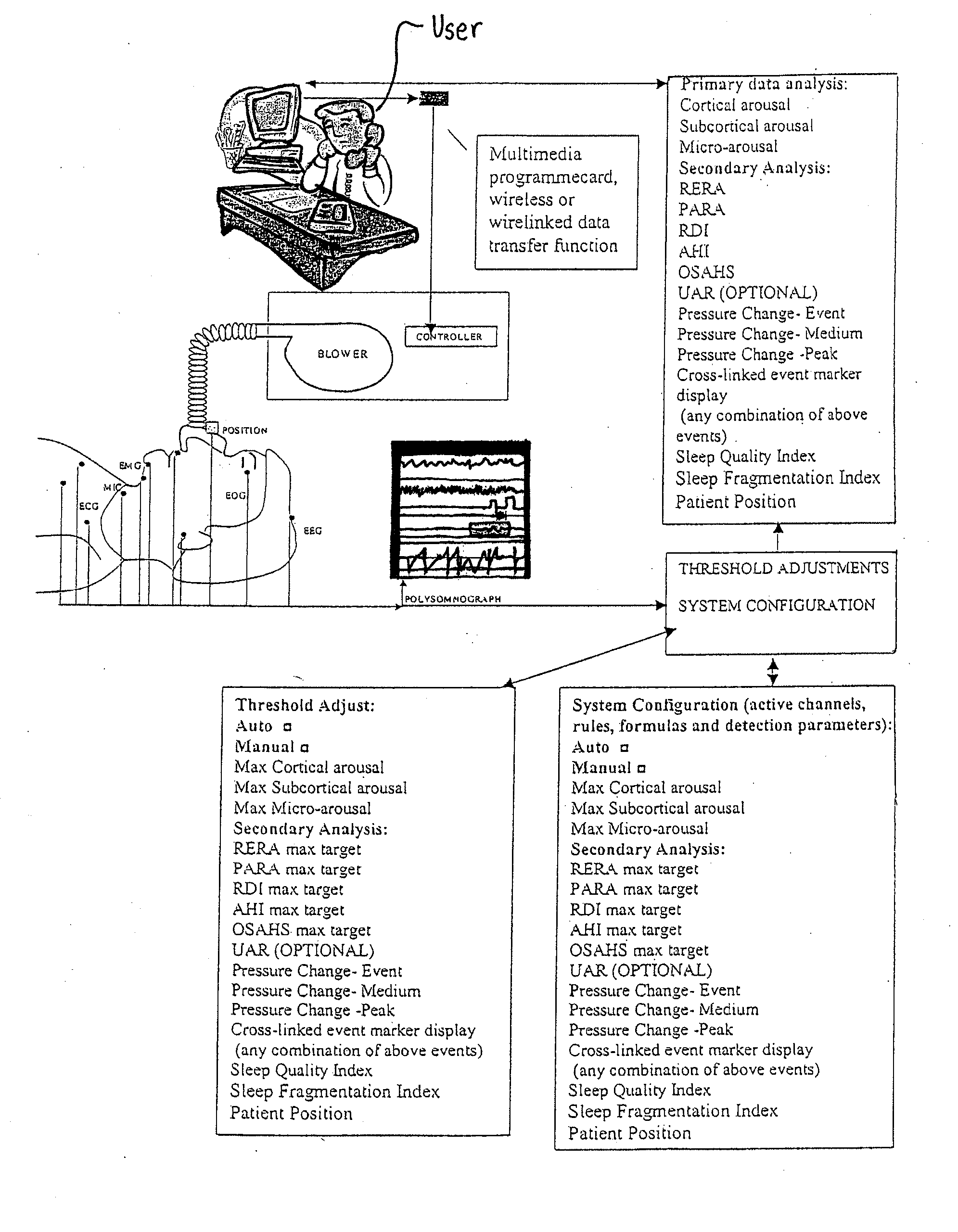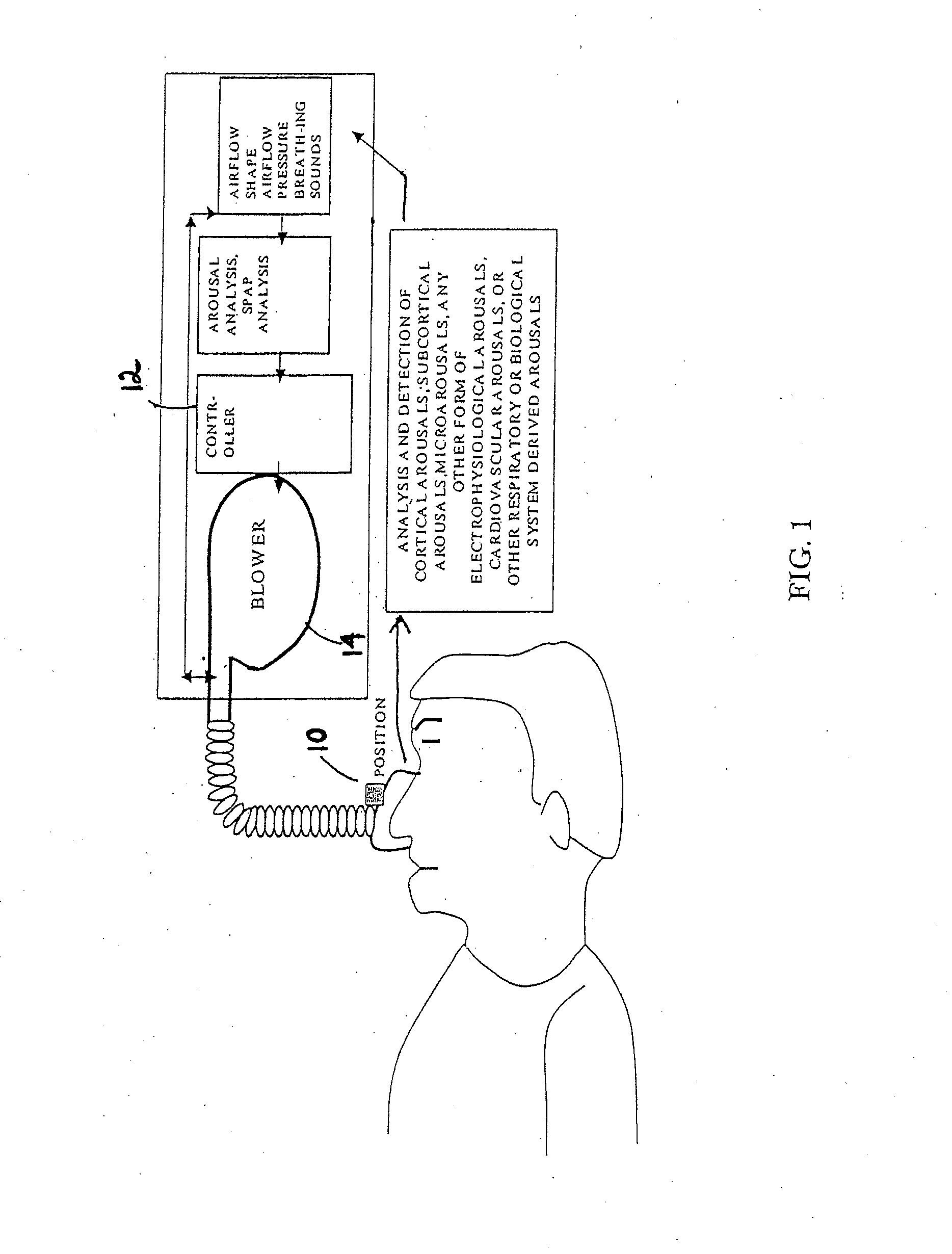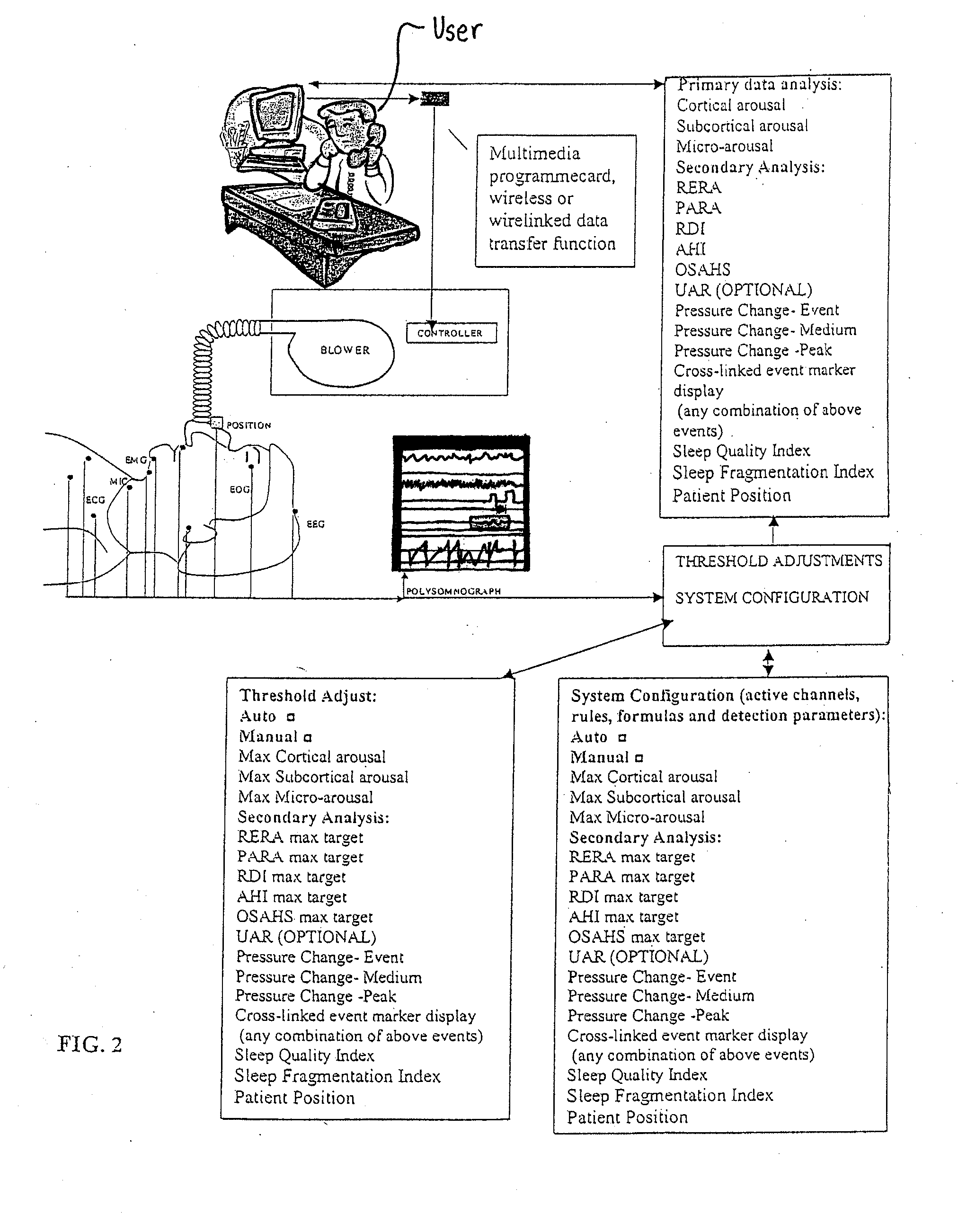Method and apparatus for maintaining and monitoring sleep quality during therapeutic treatments
a technology for monitoring and maintaining sleep quality, applied in the field of therapeutic treatments, can solve the problems of severe affecting the quality of sleep that the patient gets, transient arousal, numerous arousals, etc., and achieve the effect of reducing or eliminating both sleep breathing disorders and sleep fragmentation
- Summary
- Abstract
- Description
- Claims
- Application Information
AI Technical Summary
Benefits of technology
Problems solved by technology
Method used
Image
Examples
Embodiment Construction
A. General Overview
[0026] The present invention is an apparatus and method for maintaining the sleep quality of a patient undergoing a therapeutic treatment. The present invention monitors and interprets physiological signals and spontaneous breathing events to detect the onset of arousal. Once the onset of arousal is determined, the present invention determines adjustments that are needed in the operation of a therapeutic device to avoid or minimize arousals.
[0027] As shown in FIG. 1, in one embodiment, the present invention includes one or more sensors 10 which detect a patient's physiological parameters, a controller 12 which monitors and determines arousal based on the physiological variables received from the sensor, and a gas delivery apparatus 14 which is controlled by the controller 12. The sensor 10 can be a combination of one or more devices which are able to monitor a physiological parameter that is used by the present invention to determine the onset of arousal or the o...
PUM
 Login to View More
Login to View More Abstract
Description
Claims
Application Information
 Login to View More
Login to View More - R&D
- Intellectual Property
- Life Sciences
- Materials
- Tech Scout
- Unparalleled Data Quality
- Higher Quality Content
- 60% Fewer Hallucinations
Browse by: Latest US Patents, China's latest patents, Technical Efficacy Thesaurus, Application Domain, Technology Topic, Popular Technical Reports.
© 2025 PatSnap. All rights reserved.Legal|Privacy policy|Modern Slavery Act Transparency Statement|Sitemap|About US| Contact US: help@patsnap.com



